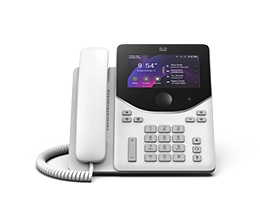What are contact center analytics?
Contact (and call) center analytics involves collecting, measuring, and analyzing data to improve business operations. It can include key performance indicators (KPIs) and metrics related to agent productivity, customer satisfaction, and operational efficiency.
Gathering and analyzing data analytics provides a way to pinpoint areas of strength or weakness throughout the call center. Moreover, they can reveal trends, impacts, and opportunities that not only reduce costs but also help organizations create a holistic view of the customer experience.
Where do analytics come from? Simply put, enterprises rely on numerous data sources, such as:
Customer call transcriptions.
Video recordings.
Live chat histories.
Customer relationship management (CRM) software.
Interactive Voice Response (IVR) systems.
Customer feedback surveys.
The role of analytics in contact center operations
The term “call center analytics” is a bit of a misnomer, as most organizations have transitioned away from traditional telephony to the more comprehensive contact center model. In other words, they’re focusing on numerous communication channels simultaneously, such as social media, SMS, email, and more. As a result, they can deliver an “omnichannel” customer experience.
Nonetheless, 61% of consumers still prefer talking on the phone when they require customer service. According to research, most businesses even experienced an increase in call volume in recent years despite the availability of numerous self-service options.
Factoring in other channels, such as social media, live chat, and email, contact centers are witnessing an explosion of customer data. The result? An avalanche of information just waiting to be transformed into contact center analytics.
However, if you’re not tapping into these data sources, you’re missing out on valuable insight that can yield significant business advantages. According to McKinsey’s research, enterprises have successfully leveraged advanced analytics to:
Reduce average handle time by 40%.
Increase self-service containment rates by 20%.
Cut employee costs by $5 million.
Improve conversion rates on service-to-sales calls by almost 50%.
That was back in 2019. Today, the latest innovations in contact center software are generating even more advanced analytics—and, in turn, deeper and more actionable insights. To demonstrate, let’s explore the ways data-driven decision-making can benefit your business:
Enhancing agent performance
Analytics can help employees get back on track if they’re disengaged or overwhelmed by work. With valuable insight into their performance, they can objectively understand where they can improve.
Not only does this boost agent productivity, but it reduces turnover by helping employees manage their time, resolve customer issues, and destress the work environment. Plus, agent analytics can help managers improve agent training programs, not to mention script creation and coaching.
Increasing revenue
Data analytics are especially useful in outbound call centers, where agents may be trying to sell or upsell to customers. For example, insight into someone’s recent purchase history or brand communications could reveal information about their pain points or needs.
This is also helpful in retaining frustrated customers at risk of abandonment. Agents can use historical data to offer a relevant solution, leading to a new or additional conversion.
Improving customer satisfaction
Analyzing customer data allows you to identify trends in customer behavior. In turn, agents can personalize interactions to offer each individual a tailored customer experience. That’s especially vital now that 71% of consumers expect personalization—and even more get frustrated when they don’t receive it.
Rather than feeling like a number, tailored customer service fosters a more trusting, personal relationship with the brand, thereby improving long-term customer loyalty. And, with a greater lifetime value, they’re more likely to make repeat purchases in the future.
Optimizing reliability
From a management perspective, analytics also help contact centers avoid costly disruptions or bottlenecks. Monitoring customer call volumes, for instance, can reveal patterns and help managers allocate resources accordingly. You can also use historical data to improve agent scheduling, ensuring you’re never understaffed during peak seasons, such as right after the holidays.
Types of contact and call center analytics
From basic to advanced analytics, the world of data-driven contact center intelligence is constantly growing. However, a few essential types stand above the rest.
1. Customer interaction analytics
Customer interaction analytics mainly monitor agent productivity and overall contact center performance. They include both real-time and historical indicators, such as:
Response times.
Average handle time.
Abandonment rate.
First-contact resolution rate.
Simply put, every interaction is an opportunity to gather valuable insight into the customer experience. Whether it begins on social media, web chat, or over the phone, you can learn a lot about target audiences by analyzing customer behavior. For example, you might notice a significant portion of your customers prefer resolving inquiries through web chat rather than traditional phone calls, prompting you to allocate more resources towards optimizing the web chat platform.
Likewise, customer interaction data can help boost agent performance by identifying areas of strength or weakness. If you discover one particular contact center agent has a history of slow response times or high abandonment rates, you can connect them with the appropriate training resources. Or, if customer conversation transcripts reveal a recurring problem or frequently asked question, you can arm agents with the knowledge to address customer needs on the first contact.
2. Conversation intelligence
Every customer conversation, regardless of where it happens, leaves behind a trail of data. This is called “conversation intelligence,” and it’s one of the most essential assets in a contact center agent’s toolbox.
Broadly, this branch breaks down into two subcategories:
Speech analytics: Also called voice analytics, this refers to audio-based data generated over the phone. Using artificial intelligence (AI) and machine learning (ML), modern contact center software solutions use sentiment analysis to identify positive and negative tones or emotions. In short, this lets you understand whether customers were upset during the interaction and what may have made them feel that way.
Text analytics: This includes text-based customer interaction data, such as live chat or chatbot conversations. Contact center analytics software often uses natural language processing (NLP) to gain actionable insights from written data. It intelligently highlights important information, like customer sentiment, recurring issues, etc.
Both speech and text analytics are essential to quality management. Rather than having to comb through hours of recordings, artificial intelligence automates the process. That way, the contact center manager obtains the necessary information and can implement corrective actions quickly.
With a speech analytics tool, for example, they can identify agents whose interactions tend to be more negative than positive. Combined with automated transcription, managers can coach agents on best practices, such as imparting empathy into the conversation. Likewise, they can understand what high-performing employees are doing well and apply these insights across the entire team.
3. Customer analytics
Customer analytics is the branch most closely related to the customer experience. It involves analyzing numerous data sources for trends, behavior changes, and opportunities to engage consumers and address customer needs.
The most common way organizations acquire these insights is through soliciting customer feedback. Take post-call surveys, for example. Measuring customer satisfaction (CSAT) and net promoter score (NPS) can shed light on the previous interaction and whether it was positive or negative. This, in turn, helps supervisors identify top performers or areas of improvement.
4. Predictive analytics
Some of the most exciting contact center developments are in predictive analytics. This branch uses artificial intelligence and machine learning models to mine customer data at scale. Better yet, these algorithms can forecast customer behavior, giving your business a key competitive edge.
Why? Because preemptively addressing customer needs not only improves customer service but also streamlines operational efficiency. With predictive analytics, you can keep your contact center aligned with both consumer and business requirements.
Predictive modeling includes:
Call volume forecasting: Use historical data to anticipate spikes in demand, allowing you to schedule staff accordingly.
Expected lifetime value: Know whether engaging certain customers is worth your time and effort. Individuals with a high lifetime value may be worth more to your business than those without.
Churn probability: Predict whether consumers are about to churn, enabling you to take corrective measures that improve customer loyalty.
Likelihood of conversion: Optimize sales calls with insight into whether leads are likely to make a purchase.
5. Omnichannel analytics
Omnichannel or cross-channel analytics refers to data that can help agents understand the complete customer journey. In other words, they provide a more seamless and comprehensive view of somebody’s interactions as they move from one channel to another.
Critically, the average consumer interacts with brands across multiple touchpoints. More importantly, 86% of people expect conversations to flow seamlessly between channels, which is practically impossible without omnichannel analytics.
Fortunately, with the right analytics tool, you can ensure customer relationship data doesn’t get lost in translation. If a customer begins their journey talking to a chatbot but elevates that conversation to a human agent, you’ll retain full context—no need to repeat information.
Omnichannel analytics also help you locate points of friction along the customer journey, such as where someone has to expend more effort to get what they want. In turn, you can leverage intelligence to orchestrate more optimal journeys, routing consumers more effectively to the solutions they need.
Contact center software: Must-have analytics features
On the surface, activating data is a simple three-part process:
Collection: Compiling data somewhere you can access it.
Analysis: Transforming raw data into actionable insights.
Implementation: Using analytics to improve performance.
However, given how much data organizations generate daily, thinking you can do this manually is unrealistic. Luckily, contact center software can streamline the entire process. With the right solution, you’ll have everything you need to automate and activate data analytics.
But what does the “right” solution look like? Here are some essential capabilities to consider:
Software integration
Data silos are responsible for inhibiting the best types of customer service interactions. The result? Longer waiting times, higher abandonment rates, and lower customer retention.
Simply put, analytics don’t work at maximum power if customer data is stuck in disjointed point solutions. That’s why the best cloud contact center platforms use Application Programming Interfaces (APIs) for seamless integration.
APIs break down barriers, making it easier for analytics to flow between core business applications. This not only simplifies data collection but also ensures democratized access to key information—an especially important aspect of cross-departmental collaboration. In short, nobody will have to waste time searching for the data they need at any given moment.
At a minimum, contact center analytics software should be compatible with your CRM, marketing automation, workforce, and inventory management systems.
Centralized management
Agents and managers require instant access to customer data. Ideally, your contact center solution will house all analytics capabilities in a comprehensive, intuitive dashboard.
Supervisors especially don’t have time to search complicated systems for the reports they need. Centralized management portals provide a bird' s-eye view of all contact center activities, whether real-time, historical, or predictive metrics.
Webex Contact Center, for example, allows you to evaluate analytics and KPIs from one pane of glass. Moreover, with workforce optimization tools, you can analyze speech and desktop actions for more insight into agent performance. Easily generate reports and share them with a few clicks, enabling a timely feedback loop for your team.
Artificial intelligence
Modern contact centers aren’t complete without AI and machine learning models working behind the scenes to augment the agent experience. AI-powered assistance tools are an emerging technology that automatically delivers everything agents need to personalize the customer experience.
For example, let’s say a customer calls your contact center to troubleshoot a problem. They thought they resolved the issue, but after a while, they decided to return with the same questions—only this time, over live chat.
Instead of having the customer repeat information, AI tools provide a complete customer history, including their previous interactions, purchases, and more. This visibility allows the agent to tailor their conversation accordingly. Better yet, it gives them a jumpstart, leading to a faster and more effective resolution.
Best of all, with Webex Contact Center, this happens in a fully consolidated view—there is no jumping between disparate tabs or applications.
Create customer delight with an all-in-one cloud solution
Your customers want answers fast. And, more importantly, they want them their way.
Webex Contact Center allows you to connect with customers on their preferred channel—chat, text, social, email, phone, you name it. With AI-powered voice and chat-based virtual agents, you can deliver an unparalleled self-service experience for faster resolution. But if needed, they can easily elevate conversations to a human agent without having to repeat themselves.
As a cloud-based omnichannel platform, Webex retains context awareness across all interactions. Our solution offers seamless integrations with key business applications, ensuring your data flows smoothly between the resources your agents rely on daily. Access them all from one comprehensive dashboard where you can view analytics, analyze trends, share reports, and manage your contact center operations.
Explore all that Webex Contact Center offers and how it can boost your customer experience today.










